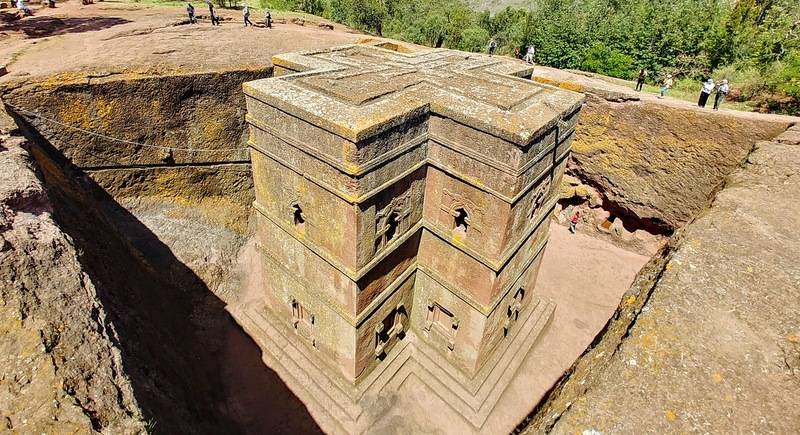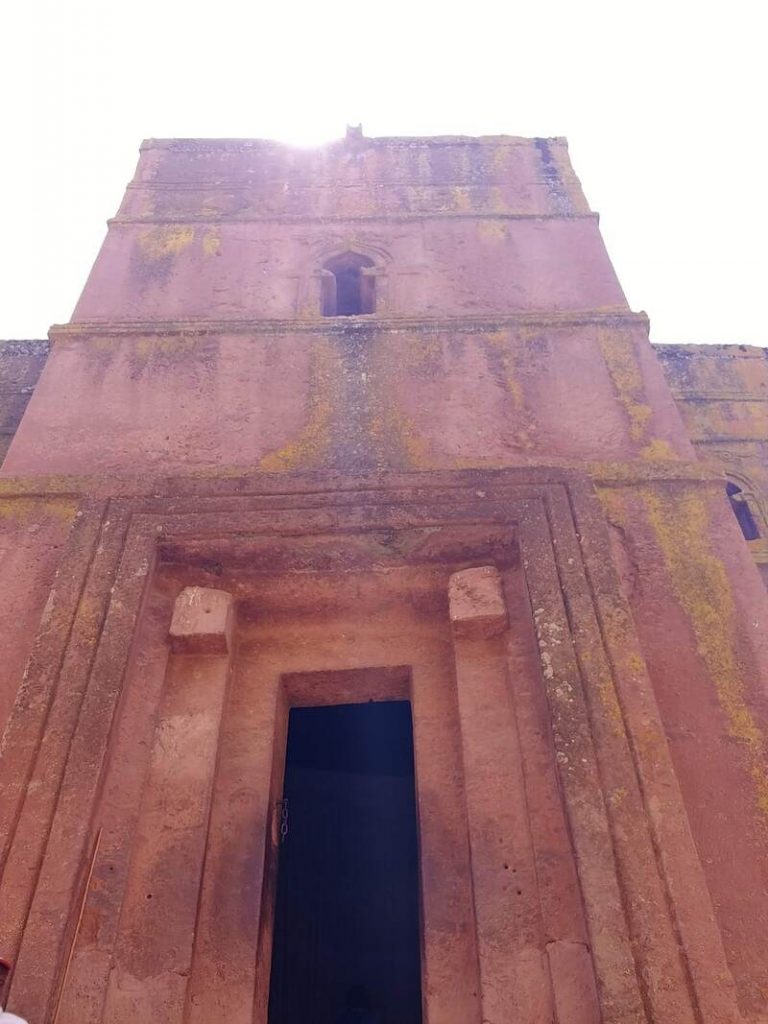The Iconic Bete Giorgis is the most majestic of all the churches in Lalibela, carved in the shape of a cross. It is said to be the masterpiece and the last church built by St. Lalibela.
The church is located on a rocky outcrop near the slopes of river Jordan, southwest of the first group of churches. On the left side of the compound there is a cliff that you can jump on to have an amazing view of the entire cross-shaped church. It’s amazing View to take selfie photo!

Why is it built as Solitary
The explanation of Local clergy why it is isolated from the other two groups of churches is “After Lalibela finished building all the churches, the patron saint of the country, Saint George, immediately came to Lalibela on his beautiful white horse and told him that there is no church dedicated after him. Lalibela promised that he the most beautiful one in his name and begin construction. S t. George was happy to see the monolithic Bet Giorgis, dedicated to him. He personally observes the construction himself. Priests will show the Hoff mark left by St George Horse.
Design
The St. George stands out among other churches around the world because it consists of a blend of simplicity and unique architectural style. It is a simple cross shape recognized by all, but it has the tradition of Ethiopian rock carving.
The shape of the cross, continues from top to the bottom Floor. Axum’s art is reflected in the designs on the edges of doors and windows.
The shape of the windows seen at the bottom of the church is left closed. The windows on upstairs are open and decorated. It is a symbolic representation of Noha’s ship during the flood. Inside, there are no genuine standing Pillars to support the thick Roof, which makes the church different from the others. Instead, there are four three-sided pilasters with corbels to support like arches. The upper dome in the eastern arm of the church is decorated with a raised Pate-cross, but the flat roof of the other side cupola shows a straight relief cross. The intersecting part of the ceiling is left undecorated.

One of the most sophisticated displays is how the sheer thickness of the walls is hidden by horizontal bands of trim on the exterior walls. The wall thickness increases step by step downwards, but this increase is cleverly hidden. It is a great way to have rapid drainage of rainwater.

Pingback: Churches of Lalibela - My Ethiopia Tours